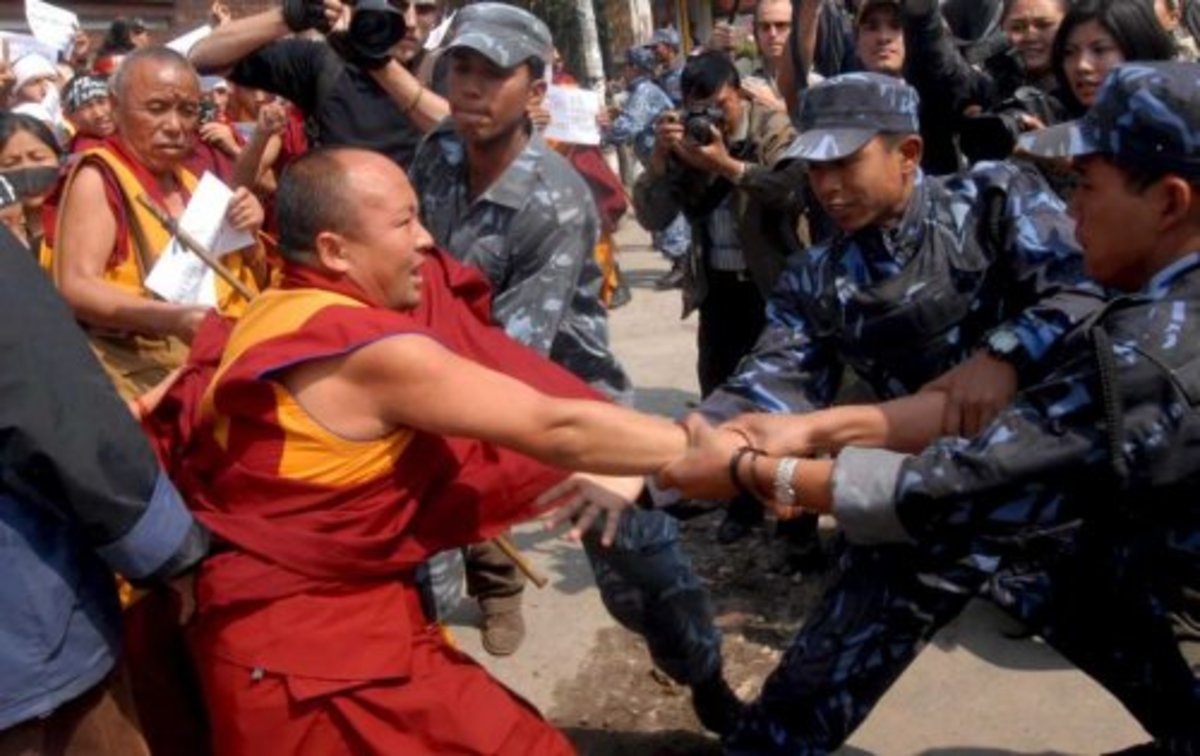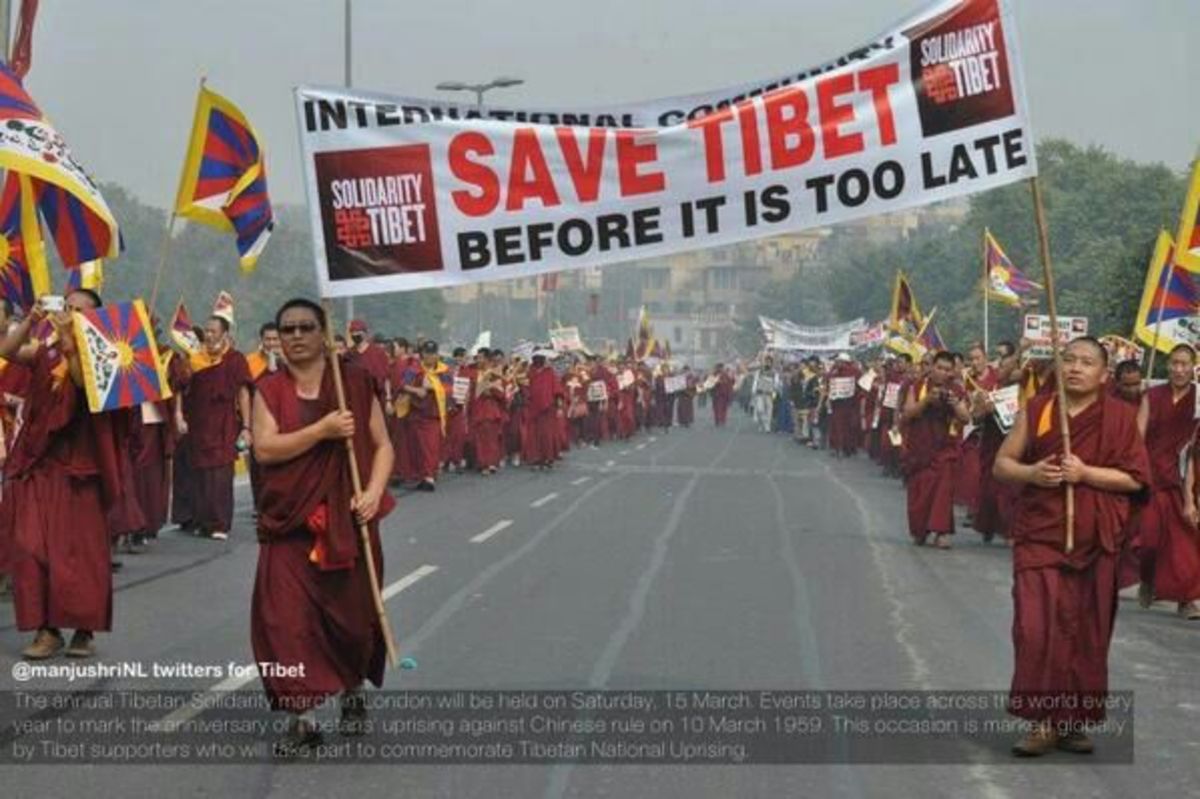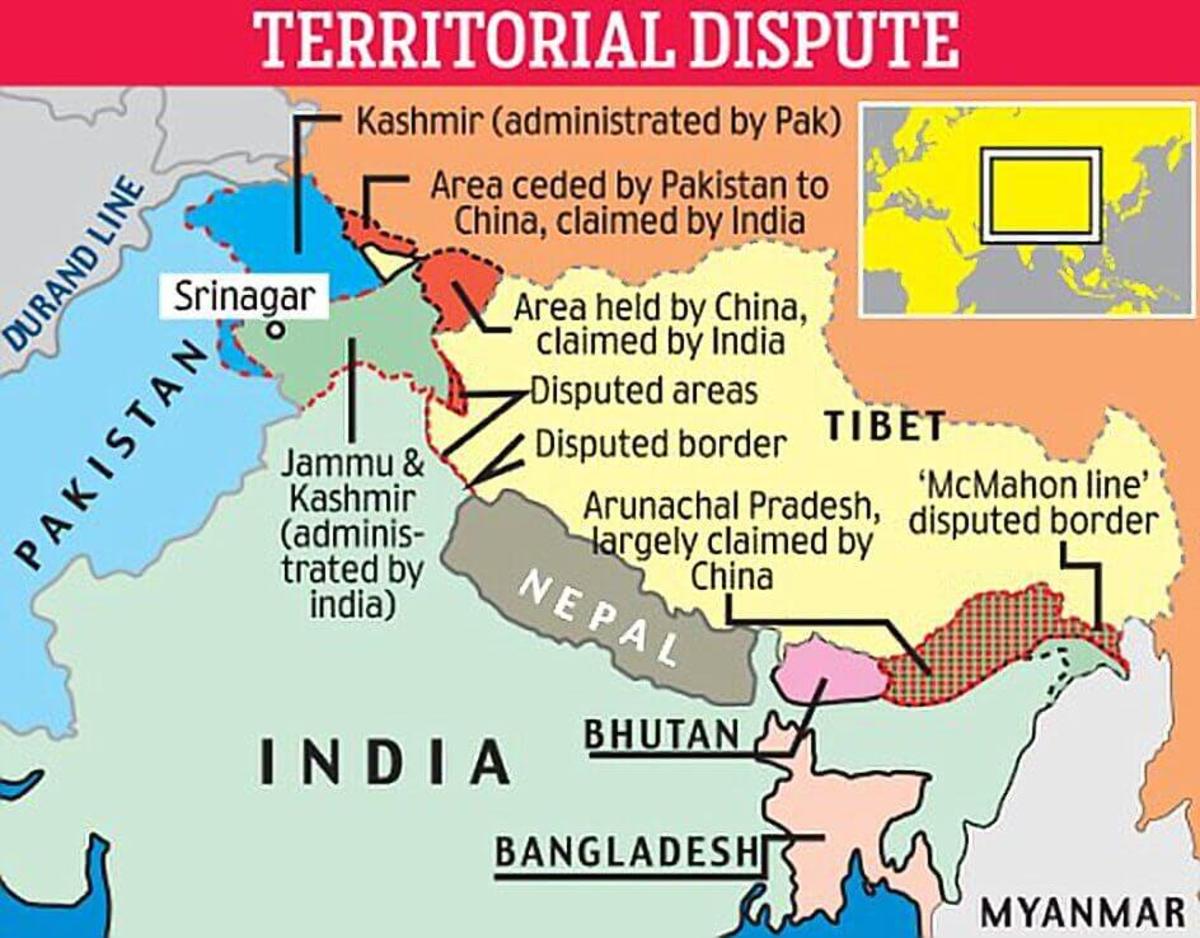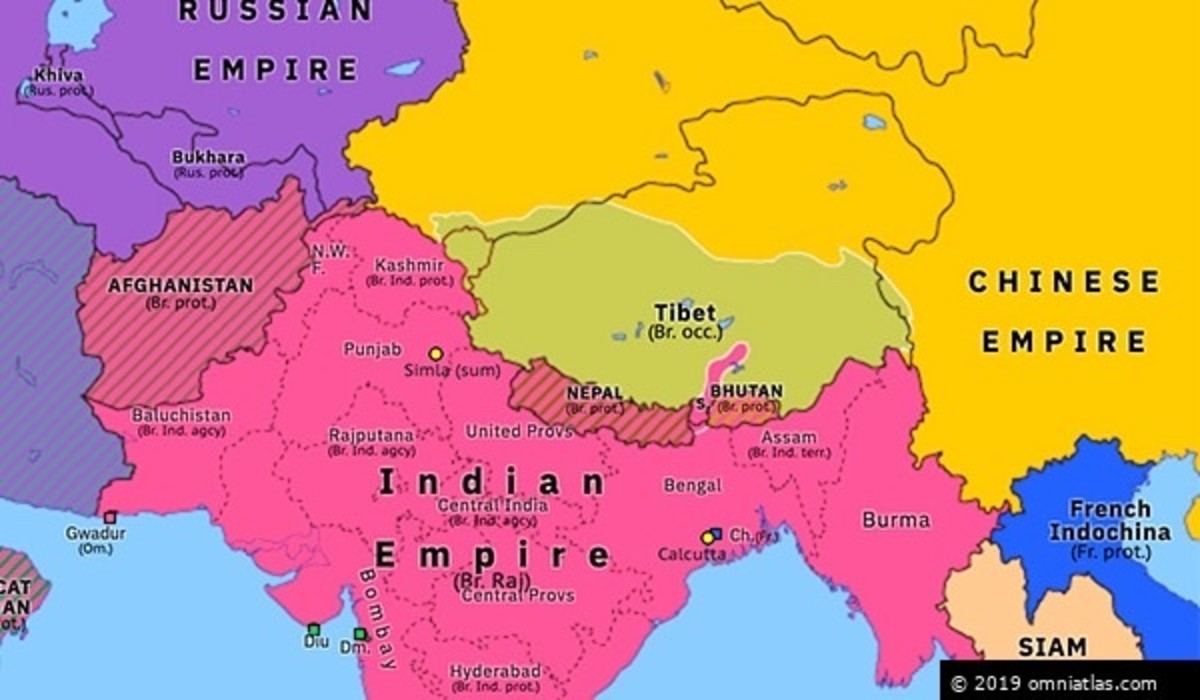The Tibet-China Conflict - Part 4: Controversy and Protests Over Violence, Past and Present
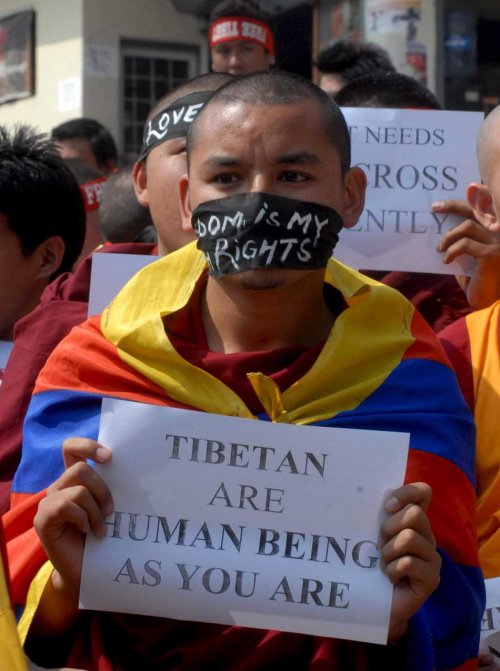
The Tibet-China Conflict
This is part four of a series of articles giving an overview on the Tibet-China conflict. "Is Tibet part of China?" is a sensitive question. Here are links to Part 1: Overview and History , Part 2: Why China wants Tibet , and Part 3: Current Policies and the Dalai Lama. This section will focus on current protests, including self-immolation, as well as China's argument for saving Tibet from a "feudal serfdom".
The Tibet-China conflict is a controversial issue, and I again ask all readers, no matter how passionate on either side, to please keep an open mind and be open to further research and discussion. This is not intended to be a purely factual article, and it includes the opinions and conclusions I have drawn from my research. Comments on both my facts and my conclusions are welcome, the more that comes to light the better, but because I do not censor, please comment responsibly.
Also, as a note, there are a few images of self-immolation that could be considered graphic in this hub.
There is much propaganda and misinformation out about Tibet, and the effect of the media is often quite incredible. Let's begin this section by taking a look at reactions to the media on sides.
Sina Weibo
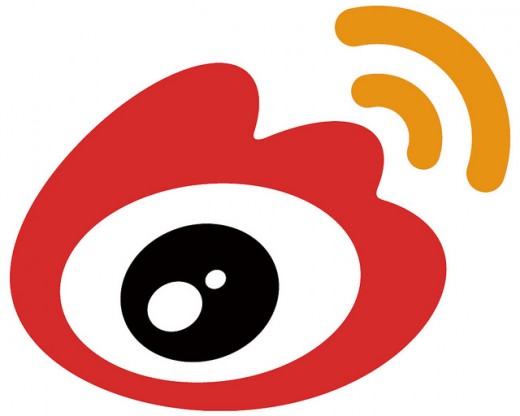
Reactions to the media, and propaganda
Reactions to the media message vary greatly from region to region, and even in a single family there can be many views on the Tibet-China conflict and the Dalai Lama. Generally, the sympathy lies with Tibet in the Western world, especially in the U.S., likely helped by the somewhat anti-China attitude of the governments. Several pro-Tibet campaigns have been formed, such as International Campaign for Tibet, Students for a Free Tibet, and most prominently, a UK based organization with over 20,000 supporters simply named Free Tibet.
Tibet critics also exist, mostly expressing themselves through the Internet. Many blogs denouncing the Dalai Lama have appeared; some offer genuine points and arguments, while others spew media rhetoric and common Internet insults like “Da-Lie Lama”. There is broad support on both ends and on all aspects of the Tibet debate, despite the efforts of ultra-extreme proponents on both sides to muffle the voice of the opposition. However, even some who have spent all their lives in the PRC and/or strongly oppose Tibetan independence note the more frequently blatant one-sidedness of the Chinese media.
Tibetan Karmapa
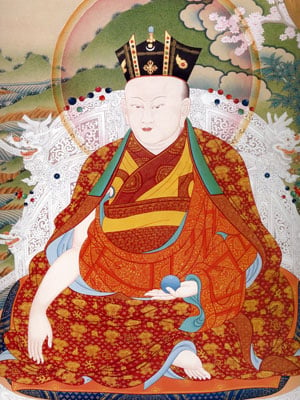
"Rescued Tibet from a slave-owning serfdom"
The most common defensible argument of the PRC, rather than clear propaganda, is that China rescued Tibetans from a slave-owning serfdom. This is a legitimate point; before the 20thcentury, almost 90% of all Tibetans lived in some sort of bondage to one of less than 300 lama houses, which are similar to the estates of the Middle Ages in Europe. The PRC claims its invasion in the 1950s was additionally justified by the human rights violations of the “feudal serfdom” (a common term used by the PRC to describe pre-1950s Tibet) under the Dalai Lama and other high lamas.
Human rights abuses undeniably occurred in Tibet before China’s invasion; serfs were treated in a way comparable to the African slaves of American history, and sometimes worse. Because Buddhism disallows killing, officials in the 13th century instead implemented punishments involving extreme mutilation, like the cutting of a leg or the pulling out of eyeballs for theft. As late as in the early 20th century, these punishments were still legal in many districts of Tibet. Seeing as by the late 20th century these punishments became much less common, China claims that her invasion ultimately saved Tibetans from the cruelties of the “feudal serfdom”.
Pro-Tibet advocates generally do not dispute the suffering of serfs under the lama houses, but they do question China’s role in ending it. They point to the progress having already been made by the 13th Dalai Lama, long before the PRC’s invasion. Though it still quietly continued in regions far from Lhasa,, the 13th Dalai Lama officially outlawed mutilation (as well as capital punishment, one of the first countries to do so) in 1913, after several years of condemning it. The 13th Dalai Lama then spent much of the first half of the 20th century implementing other policies that were aimed towards gradually reforming the Tibetan social system. Tibet advocates also point out that China did not attempt to abolish the serf system until 1959, and even then their efforts were built upon those made by the 13th and 14th Dalai Lamas.
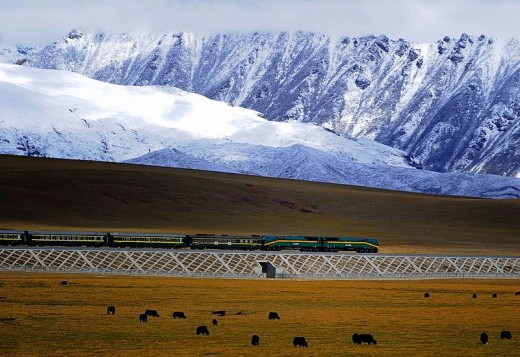
Current well-being of Tibetans
The main point of contention is the well-being of most Tibetans after the PRC’s invasion. Not surprisingly, China and Tibet have completely opposing views. China states that Tibetans are overall much more prosperous than they could possibly be otherwise and that the takeover of the secular (to the point of anti-theistic) Chinese government has resulted in greater freedom for Tibetans. Tibet claims that most economic improvements would have also been possible without China’s violent takeover. Additionally, advocates say that the human rights violations that have occurred under the PRC “render China’s claim for ‘moral high ground’ completely hypocritical” (http://www.freetibet.org/about/human-rights).
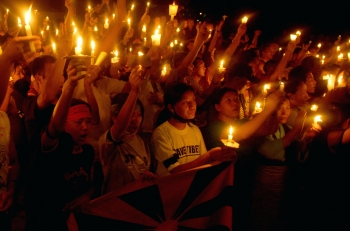
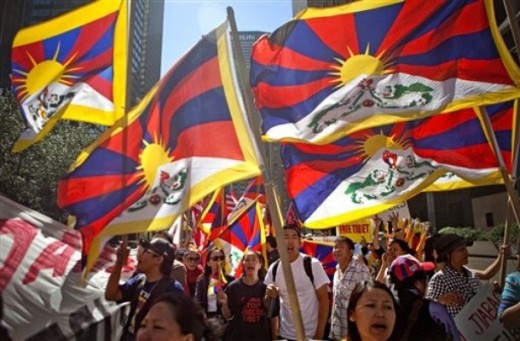
Abuse, violence, and Tibet protests
Tibet’s arguments are given a sense of legitimacy by reports of Chinese abuse of Tibetans remaining in Tibet. Based on reports by independent journalists, peaceful dissent and protests are often met with harsh punishments meted out by the Han appointed officials. Accounts include jail, beatings, and myriad forms of torture. Though most reports are secondhand and so should be regarded with some skepticism, the accounts are simply too numerous to all be the invention of “violent Tibetan separatists” (Anonymous. “Commentary: Dalai Lama is spewing lies”. China Daily).
Protests can be assumed to have been taking place almost continuously after the Dalai Lama was forced to flee into exile in 1959, but several incidents have been especially publicized by the Western media. For example, in 2008 during the Beijing Olympics, Tibetan protests grew louder in the hopes that they would be heard with so much attention trained on China. Though beginning as peaceful protests on an unofficial annual Tibetan Uprising Day, the demonstrations ended up involving theft, burning, and violent rioting. This stretched Tibet-China relations almost to breaking point. Because PRC authorities would not allow the media into Tibet while the protests were happening, reports are mostly unofficial, but journalists that were able to get inside write that the violence was instigated by Tibetans who targeted Han Chinese and Hui Muslims.
The Chinese government accused the Dalai Lama of encouraging and possibly instigating the unrest. The Dalai Lama denied this, repeating his commitment to only peaceful protests and saying that the rioting was instead caused by widespread desperation and unhappiness.
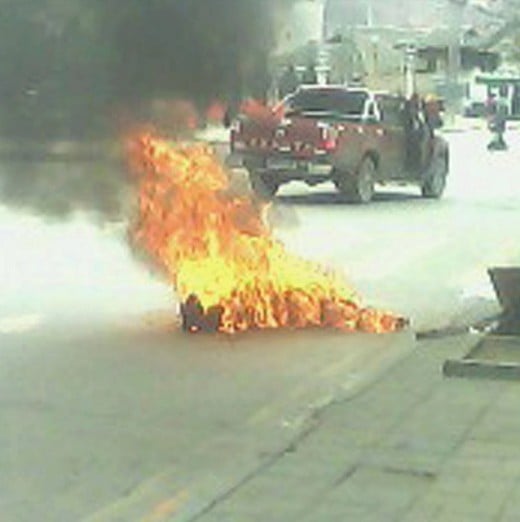
Self-Immolation
Despite incidents like the 2008 uprising, the most famous of Tibetan protests are not enormous gatherings or acclaimed speeches. Rather, they are individual and shockingly violent while still honoring the Buddhist code of not harming others. They are devastatingly creative demonstrations that reach such an extreme point of violence that they cannot be successfully suppressed. This protest method, in which the individual sets themselves on fire, is called “political protest by self-immolation”, usually referred to as simply self-immolation. Dramatic and obvious, the flames from the burning flesh of the protesters have come to symbolize the desperation of the Tibetans. Though repeatedly condemned by the Dalai Lama, 21 Tibetans have been officially confirmed to have self-immolated since 2009, with 15 dying from their injuries. The unofficial number could be as high as 50, or higher. Videos of their actions have gone viral, inspiring many sorrowful vigils in Tibet as well as in other parts of the world.
Youtube Video Overview of Tibetan Self-immolation
Map of Tibet
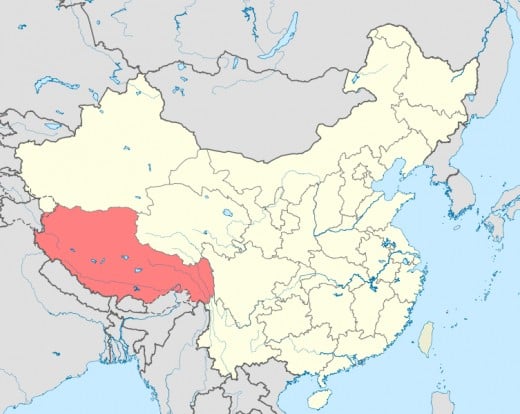
The Tibet-China conflict, no resolution yet
With myriad examples of violent demonstrations and suicides, China’s gross mishandling of Tibet has clearly caused drastic repercussions that can, and should, no longer be ignored. The PRC’s rightful concerns about the future well-being of her people cannot justify the irreplaceable losses caused by her means: thousands of soldiers dead, an entire culture rapidly withering, young lives burnt to ashes. China, instead of examining the reasons behind widespread Tibetan despair and implementing policies to help the situation, tries to scapegoat the Dalai Lama. Instead of confronting mistakes and being receptive to input from Tibet, she hides behind propaganda and dubious historical claims.
Though it might make the jobs of today’s Chinese foreign policy advisers easier, ultimately misinformation and deception will not be adequate substitutes for genuine reform of China’s currently misguided policies. And genuine reform can only begin from within the PRC. If China chooses to take steps towards peaceful cooperation with Tibet, her editorialists can perhaps begin using legitimate truths to paint her into the right side of history.
Sources
If you are interested in this conflict, I highly suggest you research a good deal and try to get the viewpoints from both sides, seeing as much of the information and facts available contradict each other. I do not pretend to be an expert on Tibet; most of the information I know is from the works listed below, as well as simply from conversation and various books.
Please keep an open mind and know that, though my sympathies don't lie with the PRC, many parties have a stake in the Tibet-China conflict. All opinions and voices should be heard, especially on a controversial topic like this; one of the worse things to do is to fully believe untruths. Comments are welcome, but like said previously, please comment responsibly.
There are no live links on the Internet sources, but you are welcome to copy paste into your browser. The sources are bolded for easier reference.
Bajoria, Jayshee. "The Question of Tibet." Council on Foreign Relations Official Website. <http://www.cfr.org/china/question-tibet/p15965 >.
Barnett, Robert. "Why doesn't China want the Dalai Lama to resign?" Foreign Policy Magazine. <http://www.foreignpolicy.com/articles/2011/03/21/Why_Doesn't_China_Want_To_Let_the_Dalai_Lama_Resign>.
Clark, Gregory. "Birth of a massacre myth." The Japan Times. <http://www.japantimes.co.jp/text/eo20080721gc.html#.T-kVESvC4Vk>
"Chronology of Tibetan Chinese Relations." International Campaign for Tibet Website. <http://www.savetibet.org/resource-center/all-about-tibet/chronology-tibetan-chinese-relations-1979-2008>.
"Commentary: Dalai Lama is spewing lies." China Daily. <http://www.chinadaily.com.cn/china/2008-04/30/content_6655137.htm >.
"Dalai Lama is NO Jesus!!!". The New Voice. <http://thenewvoice.wordpress.com/2008/04/09/dalai-lama-is-no-jesus/>.
Dalai Lama XIV. "Five Point Peace Plan." Tibet. U.S. Congress, Washington D.C. 21 Sept. 1987. Address.
Dalai Lama XIV. Freedom in exile: the autobiography of His Holiness the Dalai Lama of Tibet.
Denlinger, Paul. “Why on tibet ". 20 Apr. 2011. Online Posting to Quora.com. <Http://www. Quora. Com/why-do-the-chinese-want-tibet/answer/paul-denlinger>
Dharma Haven. <http://www.dharma-haven.org/tibetan/preserving-culture.htm>.
Free Tibet. 7 June 2008. <www.freetibet.org>.
"History of Tibet." Asianhistory.org. Asia Tourism.<http://www.asianinfo.org/asianinfo/tibet/pro-history.htm>.
Karpova, Lisa. "Dalai Lama to transfer leadership. pravada.ru <http://english.pravda.ru/world/asia/10-03-2011/117157-Dalai_Lama_to_transfer_leadership-0/>.
LaFreniere, Sharon. "3 Tibetan herders self immolate in anti Chinese protest." New York Times. <http://www.nytimes.com/2012/02/06/world/asia/3-tibetan-herders-self-immolate-in-anti-chinese-protest.html>.
Liu, Melinda, and Sudip Mazumdar. "Newsweek International Interview: The Dalai Lama on Tibet." Council on Foreign Relations Official Website. <http://www.cfr.org/china/newsweek-international-interview-dalai-lama-tibet/p15822>.
LTee2012. “Tibet Self Immolation”. YouTube. Uploaded 21 Oct. 2011. <www.youtube.com/watch?v=w2dgKSgCarM>.
"Mineral Resources of Tibet." lhassa.org. <http://www.lhassa.org/en/geography-of-tibet/mineral-resources-of-tibet.php>.
Official Webpage for His Holiness the 14th Dalai Lama of Tibet. Dalailama.com.<www.dalailama.com>
"Q&A: China and the Tibetans." BBC News. <http://www.bbc.co.uk/news/world-asia-pacific-14533879>.
Sperling, Elliot. The Tibet-China Conflict: History and Polemics. Ed. Muthiah Alagappa. Washington D.C.: East-West Center, 2004. 1-38. Web. 3 Feb. 2012.
Szczepanski, Kallie. "Asian History-Tibet and China." About.com. <http://asianhistory.about.com/od/china/a/TibetandChina_3.htm>.
"Tibetan Buddhism." BBC: Religions. <http://www.bbc.co.uk/religion/religions/buddhism/subdivisions/tibetan_1.shtml>.
"Tibet and China-Views on History." International Tibet Independence Movement. <http://www.rangzen.com/history/views.htm>.
Tibet Government-in-exile. Central Tibetan Administration Website. <http://tibet.net/ >.
Wollenberg, Roger L. "Dalai Lama questions self-immolation." UPI.com. <http://www.upi.com/Top_News/Special/2011/11/21/Dalai-Lama-questions-self-immolation/UPI-91051321873560/>.

